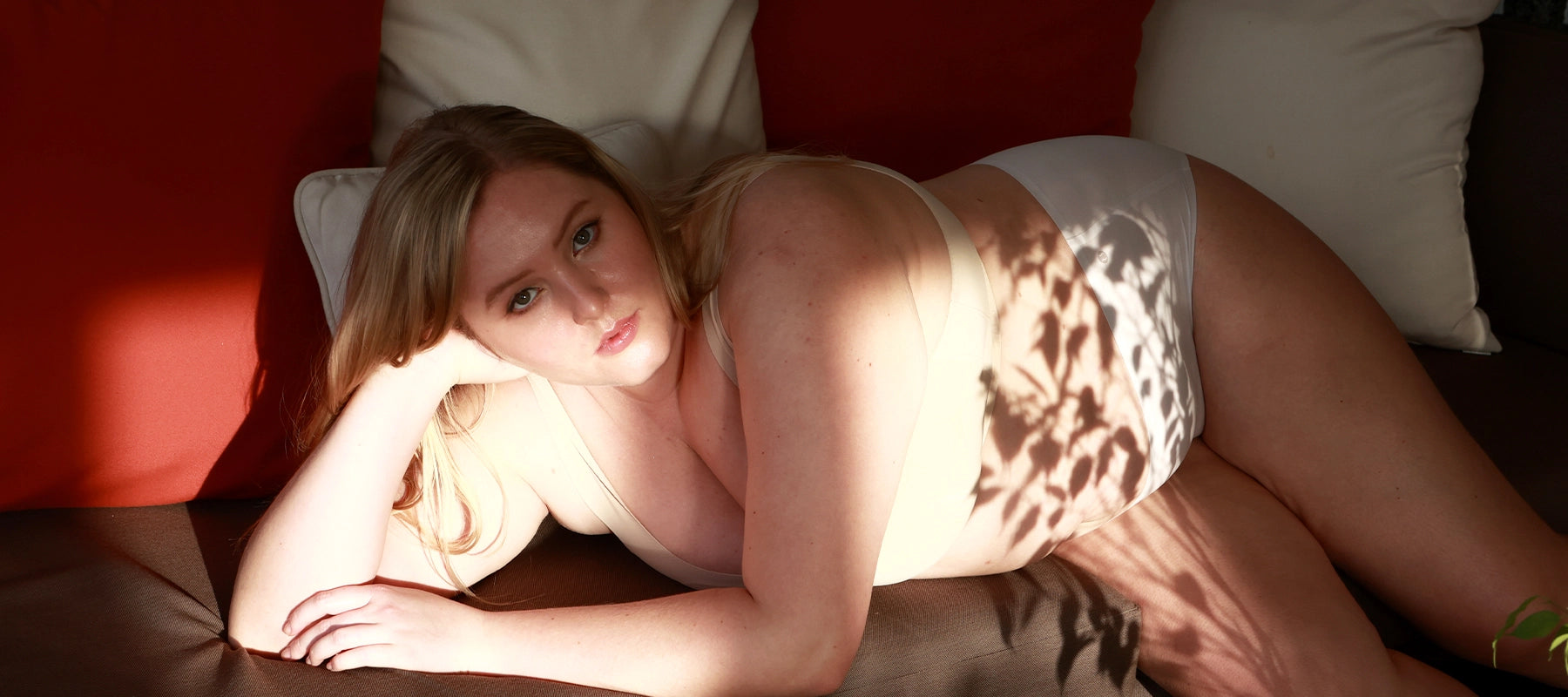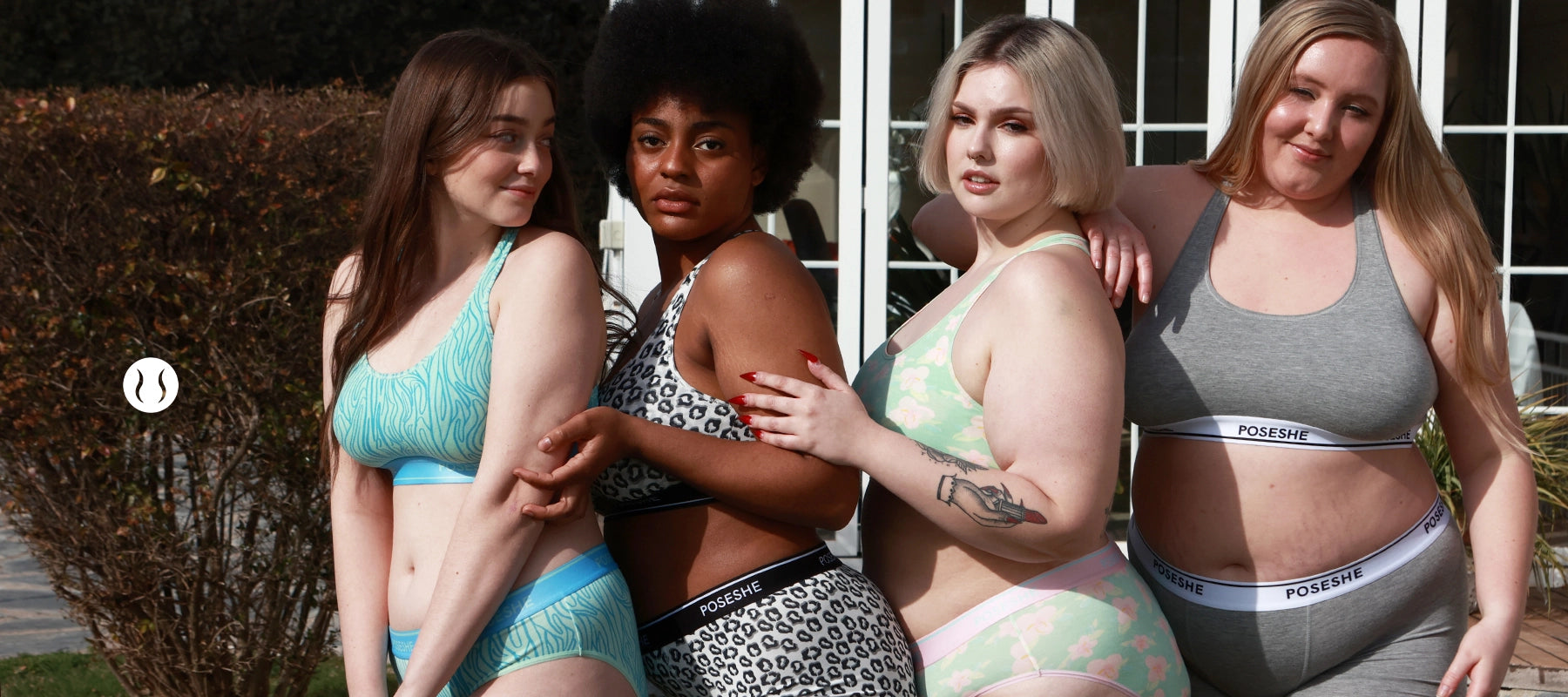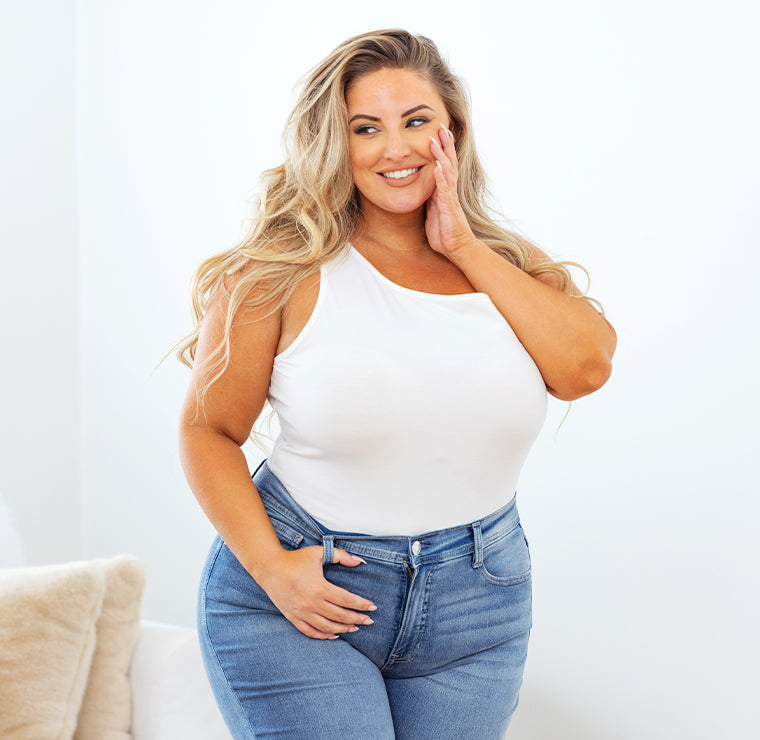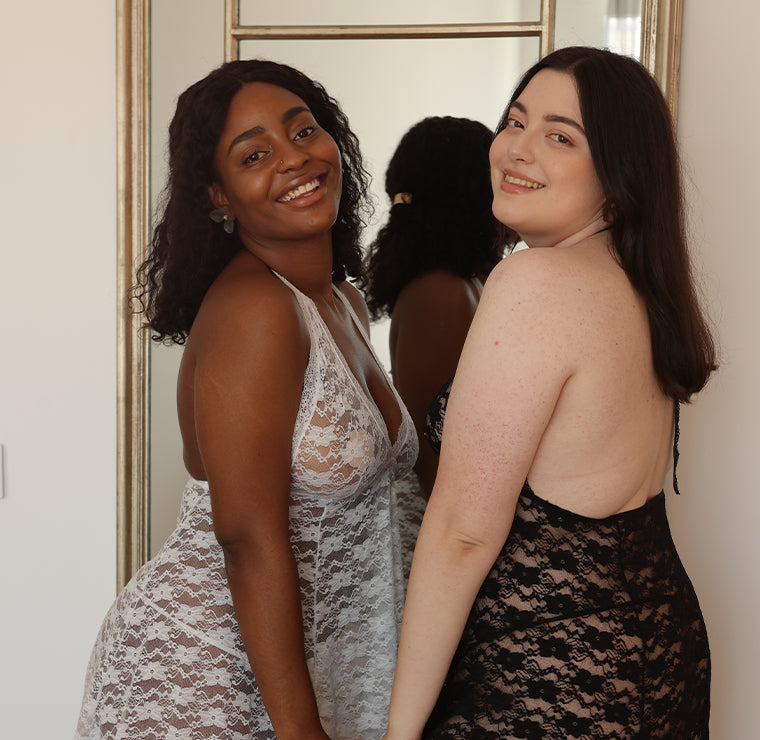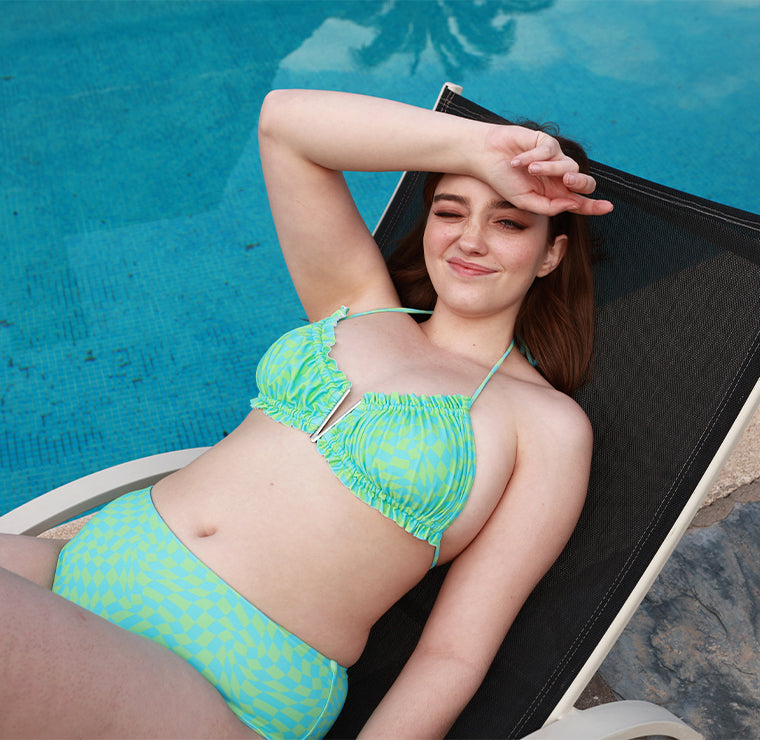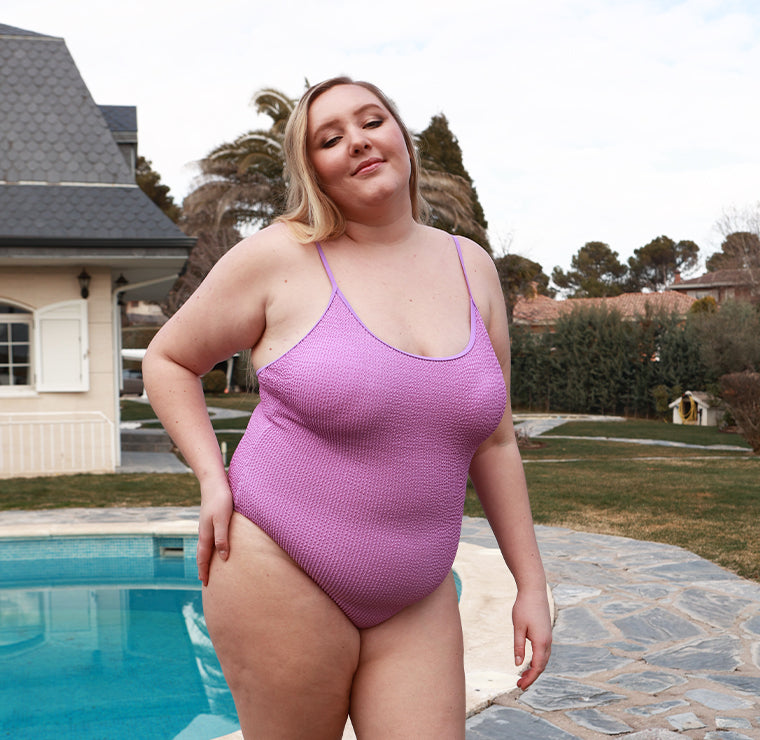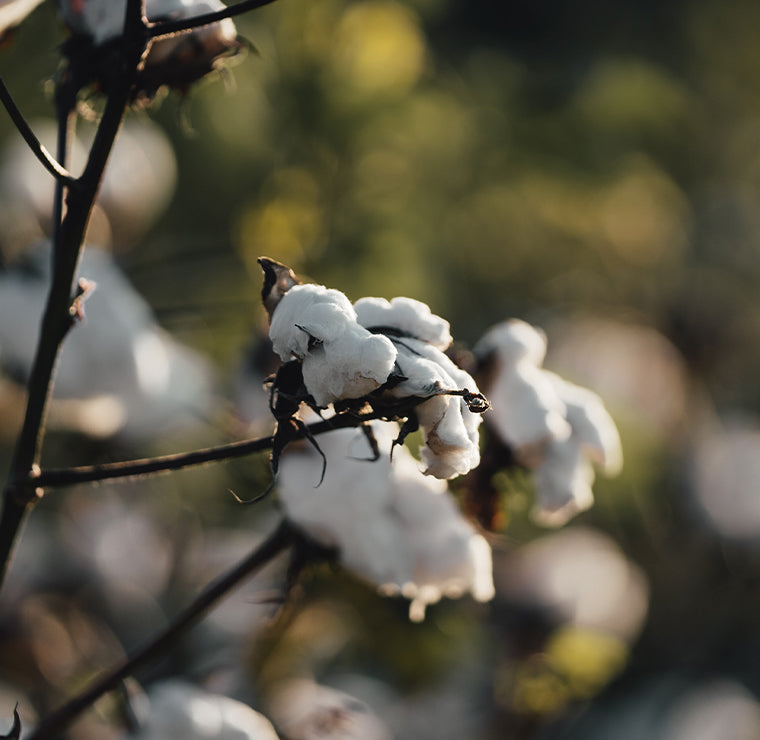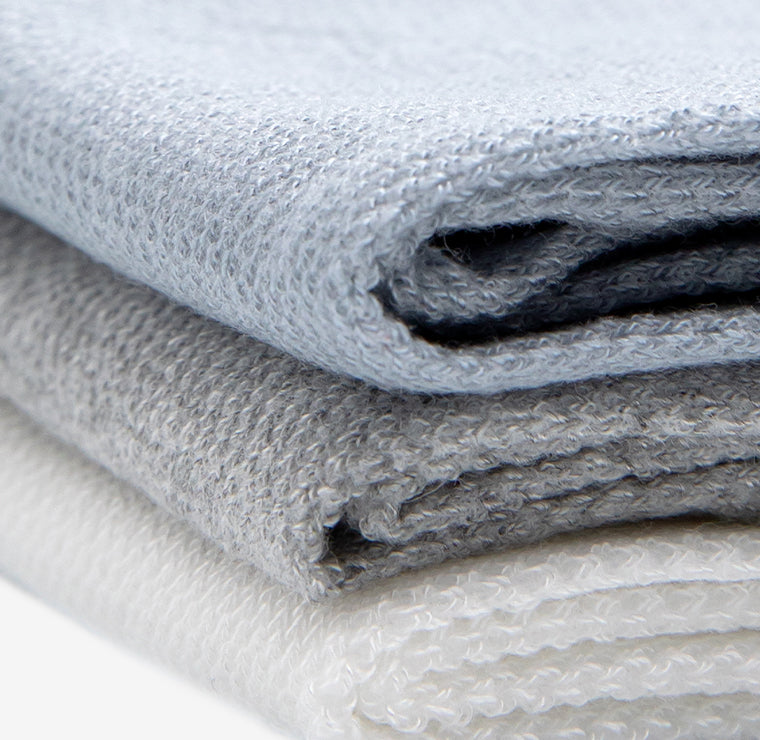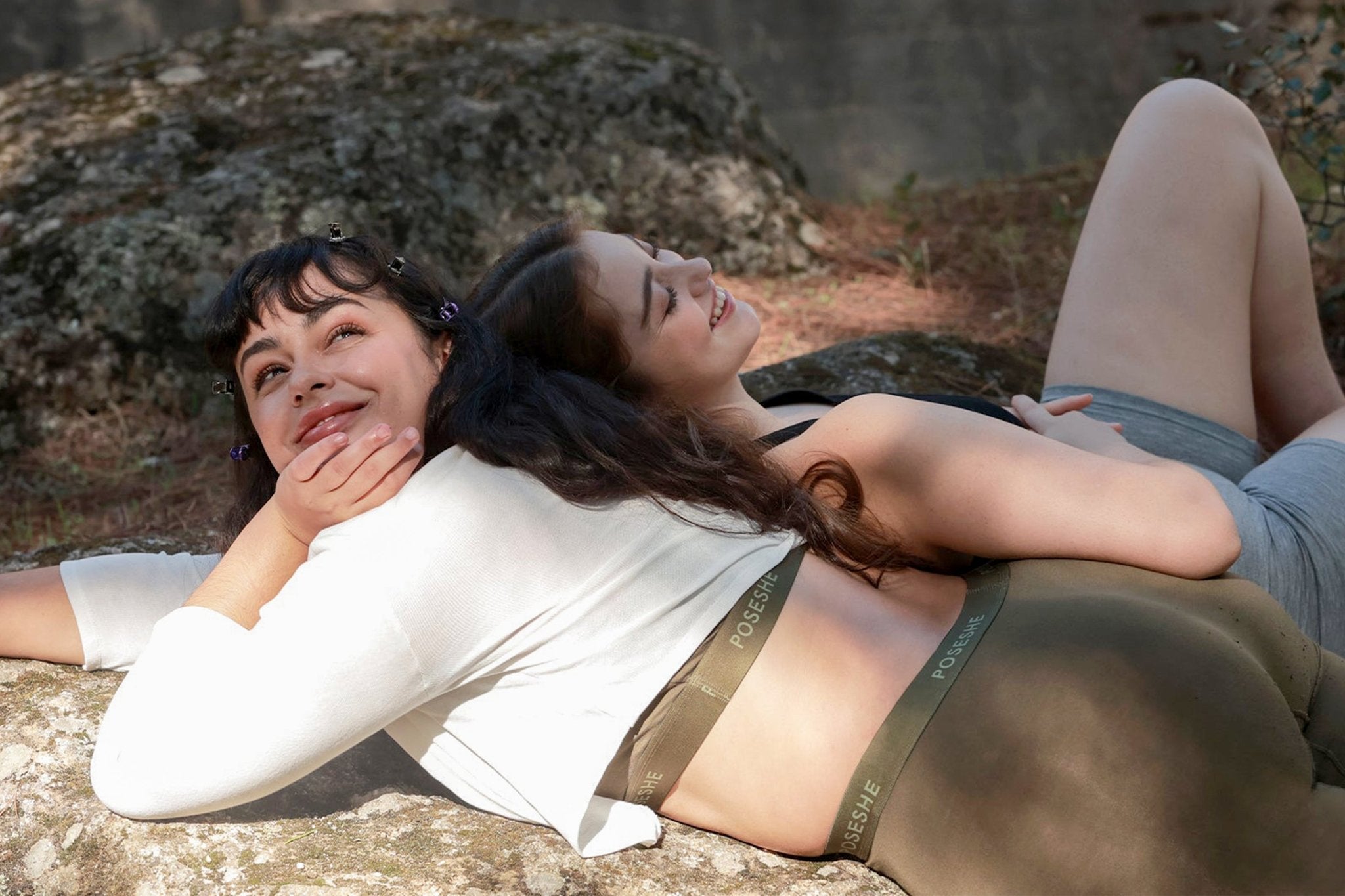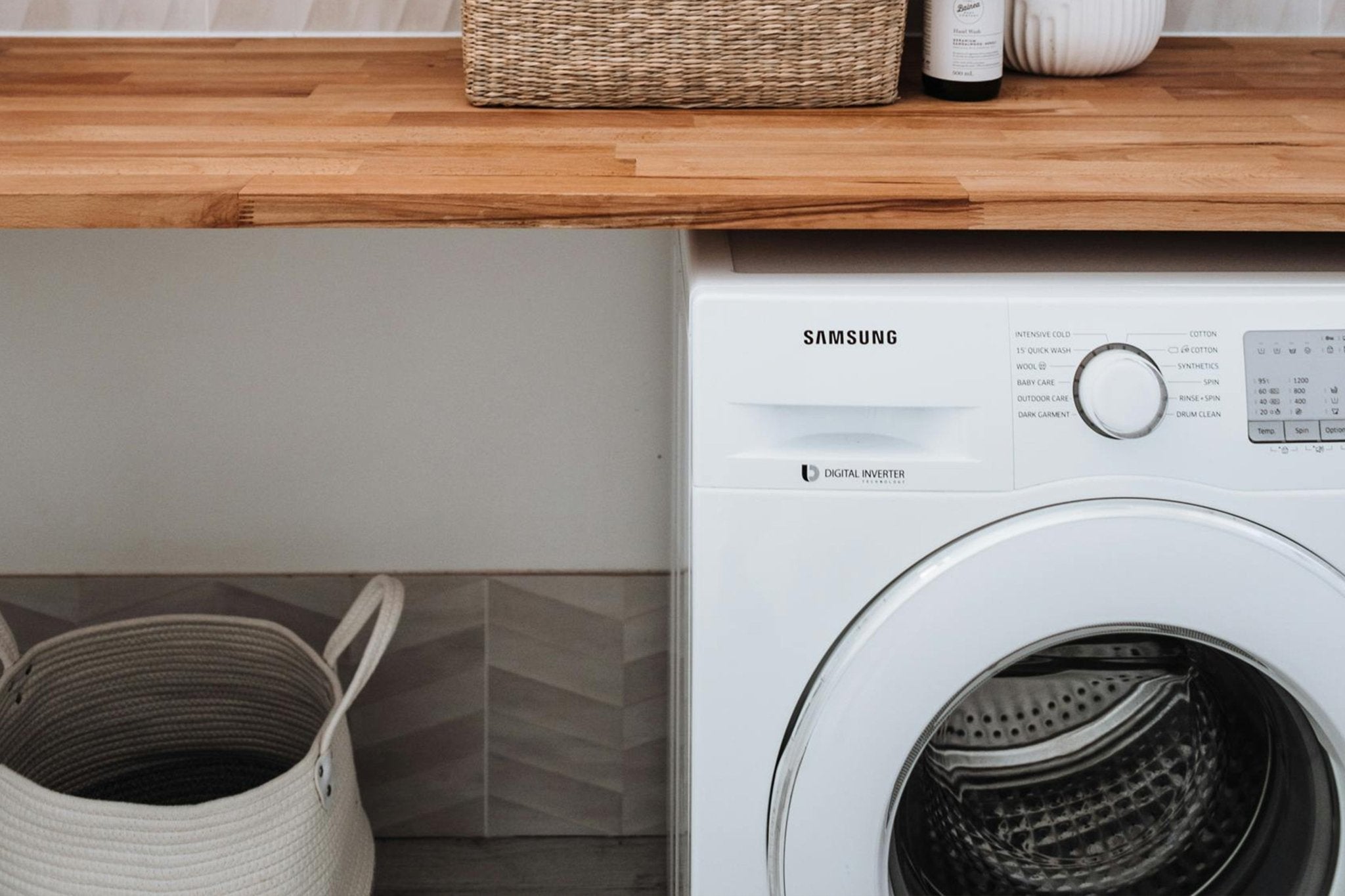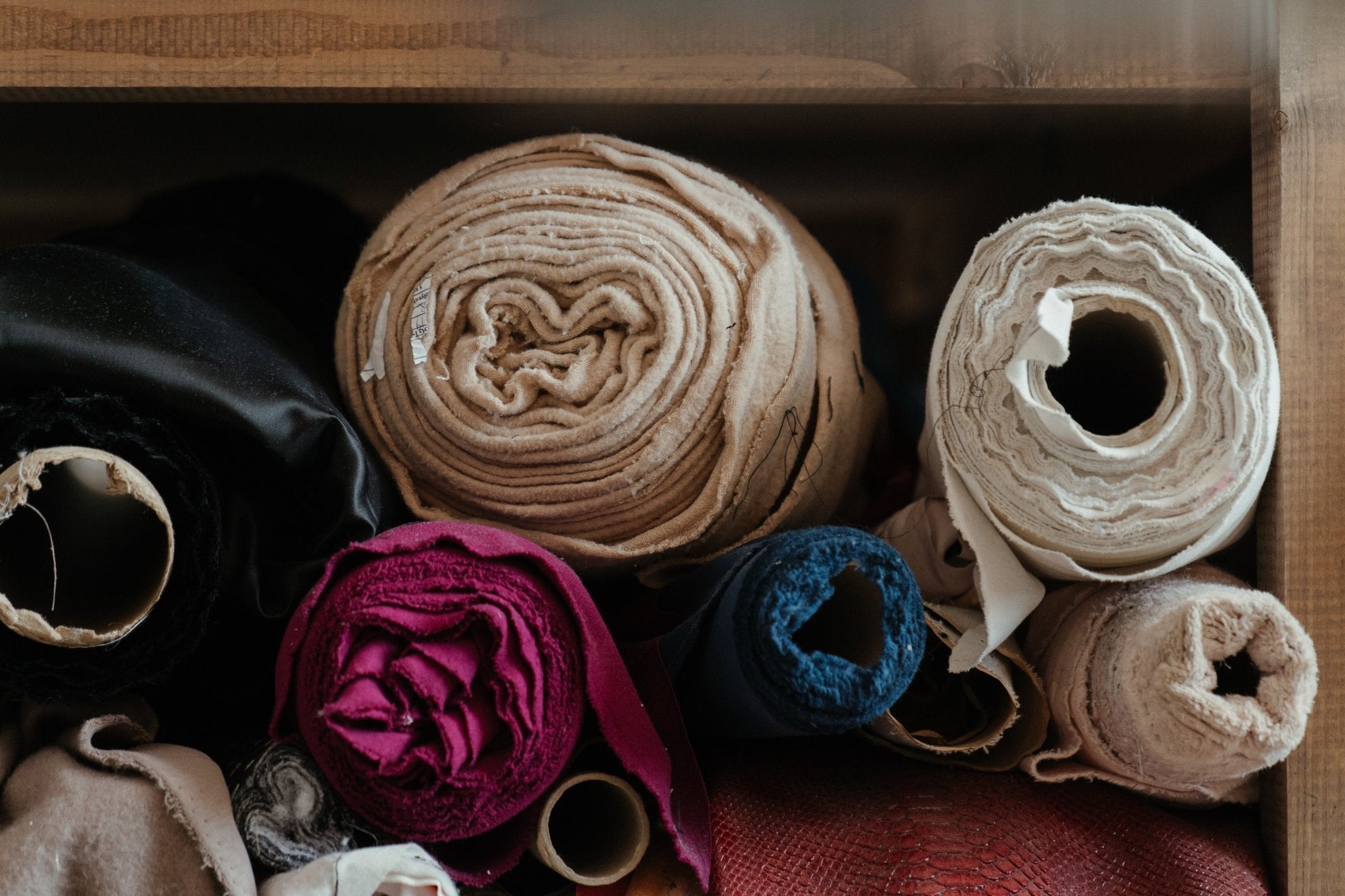
Guide to Selecting Women's Underwear Fabric
Marilyn Monroe's memorable quote, "I only wear Chanel N°5 to bed," highlights the benefits of sleeping nude for both health and comfort. However, this option isn't for everyone. For those who prefer wearing something, the correct choice of underwear is essential. Discomfort in underwear can often be attributed to improper fabric choice, even if the fit is right. Thus, fabric selection is just as important as style and fit, significantly impacting the comfort, support, and durability of underwear. This article explores the pros and cons of common fabric choices, guiding you in selecting materials that provide near-nude comfort, even if you choose not to sleep naked.

- Cotton: The Classic Staple
- Pima Cotton: The Premium Softness
- Microfiber: The Durable Performer
- MicroModal: The Silky Soft Innovator
- Bamboo: The Eco-Friendly Comfort
- Silk: The Luxury Choice
- Nylon: The Stretchable Companion
- Coolmax: The Athletic's Pick
Cotton: The Classic Staple
Cotton Originating from the Arabic "quton," cotton has its earliest production roots in India, with a history dating back to 5000 BCE. It has since evolved to become one of the most popular fabrics worldwide.

Key Characteristics:
- Durability: High-quality cotton is known for its strength and longevity.
- Breathability: Excellent, making it ideal for a variety of climates and comfort needs.
- Stretchability: In its pure form, cotton has minimal stretch but can be blended with elastic materials for greater flexibility.
Advantages:
- Skin-Friendly: Hypoallergenic and gentle, cotton is well-suited for sensitive skin.
- Ease of Maintenance: It's easy to wash and care for, adding to its practical appeal.
- Affordability: Cotton is generally more cost-effective compared to many synthetic and luxury fabrics.
Disadvantages:
- Moisture Management: Cotton tends to absorb moisture, which may be less comfortable during intense physical activity or in very humid conditions.
- Shrinkage and Wrinkling: Cotton garments may require careful handling to avoid shrinking and wrinkling.
- Pilling: Over time and with regular use, cotton can show signs of pilling.
Pima Cotton: The Premium Softness
Pima Cotton, often regarded as one of the finest cotton types in the world, is known for its ultra-soft and extra-long fibers. It is primarily grown in South America and the southwestern United States, making it unique in its geographic origin.

Key Characteristics:
- Softness: Pima cotton outshines regular cotton in softness, offering a plush and luxurious feel.
- Sweat-Absorbing Ability: Its absorbency is on par with regular cotton, effectively managing moisture.
- Breathability: Highly breathable, Pima cotton ensures comfort in various environmental conditions.
- Skin-Friendly Feel: Known for being exceptionally gentle on the skin and hypoallergenic, it's ideal for sensitive skin types.
- Elasticity: Similar to regular cotton, its elasticity is limited but can be enhanced when blended with stretchable fibers.
Advantages:
- Durability: Pima cotton is renowned for its long-lasting quality, resisting wear and tear over time.
- Resistant to Pilling and Fading: Unlike standard cotton, Pima cotton is less likely to pill and fade, maintaining its appearance and texture even after multiple washes.
Disadvantages:
- Cost: Pima cotton tends to be more expensive than regular cotton due to its superior quality and production costs.
- Moisture-Wicking: While excellent in absorbency, it may not match the moisture-wicking capabilities of some synthetic fabrics, which could be a consideration for athletic wear.
Microfiber: The Durable Performer
Microfiber, known for its lightweight and durable qualities, excels in moisture management, making it a preferred choice for active and daily wear.

Key Characteristics:
- Softness: Microfiber is recognized for its very soft texture, offering a luxurious feel.
- Sweat-Absorbing Ability: It performs well in sweat absorption, particularly in blends optimized for athletic apparel.
- Breathability: Generally good, though it may vary between different types of microfiber.
- Skin Compatibility: Smooth against the skin, but its breathability may not match that of natural fibers.
- Elasticity: High elasticity ensures a snug and comfortable fit.
Advantages:
- Durability: Known for its robustness, microfiber withstands regular use and washing well. Wrinkle Resistance and Quick
- Drying: Ideal for busy lifestyles, as it resists wrinkles and dries quickly.
- Versatility: Capable of mimicking various fabric textures, making it suitable for a wide range of applications.
Disadvantages:
- Breathability Concerns: While generally breathable, it might not be as airy as natural fabrics like cotton.
- Odor Retention: Tends to retain odors more than some other fabrics, which could be a drawback for certain uses.
- Comfort against Skin: Some might find it less comfortable compared to natural fibers due to its synthetic nature.
MicroModal: The Silky Soft Innovator
MicroModal, a form of man-made silk, was initially developed in Japan in the 1950s. It belongs to the category of plant-based textiles and is considered a luxurious fabric due to its soft touch and premium cost. As a refined version of Modal, MicroModal offers a lighter and more delicate texture.

Key Characteristics:
- Absorbency: Superior to cotton, making it highly effective in warm weather for absorbing moisture.
- Texture: Feels silky against the skin, providing a luxurious wearing experience.
- Temperature Regulation: While it is not the best at retaining body heat, it's ideal for warmer climates.
Advantages:
- Softness and Comfort: MicroModal is renowned for its extreme softness and comfort.
- Moisture-Wicking: Excellent at wicking away moisture, keeping the skin dry and comfortable.
- Breathability: Highly breathable, suitable for sensitive skin, and reduces the risk of skin irritation.
Disadvantages:
- Durability: May be less durable compared to certain synthetic fabrics.
- Cost: Typically more expensive, reflecting its high-quality and luxurious nature.
- Care Requirements: Needs careful washing to maintain its texture and integrity.
Bamboo: The Eco-Friendly Comfort
Bamboo fabric, celebrated for its remarkable softness often likened to silk or cashmere, is a standout in the realm of eco-friendly textiles.

Key Characteristics:
- Softness: Exceptionally soft, providing a luxurious feel akin to more expensive fabrics.
- Sweat-Absorbing Ability: Exhibits good moisture-wicking properties, efficiently managing sweat.
- Breathability: Its breathability is top-notch, ensuring skin stays cool and dry.
- Skin Compatibility: Extremely gentle and well-suited for sensitive skin.
- Elasticity: Naturally stretchy, which can be enhanced when combined with spandex.
Advantages:
- Eco-Friendliness: Bamboo is a sustainable choice, with a minimal environmental footprint.
- Antibacterial Qualities: Naturally antibacterial, reducing odor and maintaining hygiene.
- Comfort for Everyday Wear: Its hypoallergenic nature and moisture-wicking ability make it ideal for daily use.
Disadvantages:
- Durability: May be less durable compared to certain synthetic fabrics.
- Cost: Typically more expensive, reflecting its high-quality and luxurious nature.
- Care Requirements: Needs careful washing to maintain its texture and integrity.
Silk: The Luxury Choice
Silk, revered as the epitome of luxury in textiles, is distinguished by its natural sheen and sumptuous feel. This exquisite fabric has a rich history and is synonymous with elegance and sophistication.

**Eclipse**
Key Characteristics:
- Softness: Silk is exceptionally soft, providing a smooth, indulgent texture that glides over the skin.
- Breathability: It offers good breathability, making it comfortable for a range of temperatures.
- Moisture Management: Silk can absorb moisture, but it does not wick it away as effectively as some other fabrics.
- Skin Compatibility: Gentle and hypoallergenic, silk is often recommended for sensitive skin.
Advantages:
- Luxurious Feel: The unparalleled softness and sheen of silk make it a choice for high-end fashion and luxury garments.
- Thermal Regulation: Silk is adaptable to different temperatures, providing warmth in the cold while remaining cool in heat.
- Aesthetic Appeal: The natural luster and drape of silk enhance its aesthetic appeal, making it a favorite for elegant clothing.
Disadvantages:
- Care Requirements: Silk requires delicate handling and often needs specialized cleaning methods.
- Durability: While strong, silk can be prone to wear and damage if not carefully maintained.
- Cost: Silk is typically more expensive than other fabrics, reflecting its premium quality.
Nylon: The Stretchable Companion
Nylon, renowned for its remarkable stretchability and resilience, has become a staple in the textile industry, favored for its versatility and durability.

harperwilde
Key Characteristics:
- Elasticity: Nylon's outstanding stretchability allows for a snug, form-fitting comfort, adapting well to various body shapes.
- Durability: It is known for being strong and resistant to wear and tear, making it a long-lasting fabric choice.
- Moisture Management: While it is quick-drying, nylon does not absorb moisture as efficiently as natural fibers.
- Skin Compatibility: Generally smooth against the skin, but may not offer the same breathability as natural options.
Advantages:
- Resilience: Nylon retains its shape and quality over time, even with regular use and washing.
- Versatility: Suitable for a wide range of uses from activewear to everyday clothing due to its flexibility.
- Care and Maintenance: Easy to care for, it is machine washable and dries quickly.
Disadvantages:
- Breathability: Less breathable compared to natural fabrics, which might be a drawback in warmer conditions.
- Sensitivity: Those with sensitive skin might find nylon less comfortable due to its synthetic nature.
- Environmental Impact: As a synthetic material, nylon's production and disposal pose environmental concerns.
Coolmax: The Athletic's Pick
Coolmax fabric stands out as the go-to choice for athletes and fitness enthusiasts, praised for its advanced moisture-wicking properties that enhance athletic performance.

Key Characteristics:
- Moisture Management: Coolmax is engineered for exceptional moisture-wicking, effectively keeping the wearer dry and comfortable during intense physical activities.
- Breathability: Offers excellent breathability, which is essential for maintaining comfort during workouts or in warm weather.
- Elasticity: While providing a comfortable fit, it has moderate stretchability, accommodating movement without constriction.
Advantages:
- Enhanced Athletic Performance: The fabric's ability to manage moisture and breathability makes it ideal for sports and high-energy activities.
- Quick Drying: Dries faster than many other fabrics, a crucial feature for athletes and active individuals.
- Durability: Resilient and long-lasting, Coolmax maintains its functional properties even after repeated use and washing.
Disadvantages:
- Cost: Can be more expensive than standard fabrics, reflecting its specialized features.
- Texture and Comfort: While performance-oriented, it may not feel as soft against the skin as natural fibers.
- Environmental Considerations: As a synthetic fabric, there are environmental impacts associated with its production and lifecycle.
In conclusion |
|
Choosing the right underwear is a personal decision based on your preferences, lifestyle, and skin sensitivity. Consider factors like comfort, breathability, moisture-wicking, and durability. Our advice is to prioritize quality over cheap options that wear out quickly. Investing in high-quality materials can benefit your skin and save you money in the long run.
|

